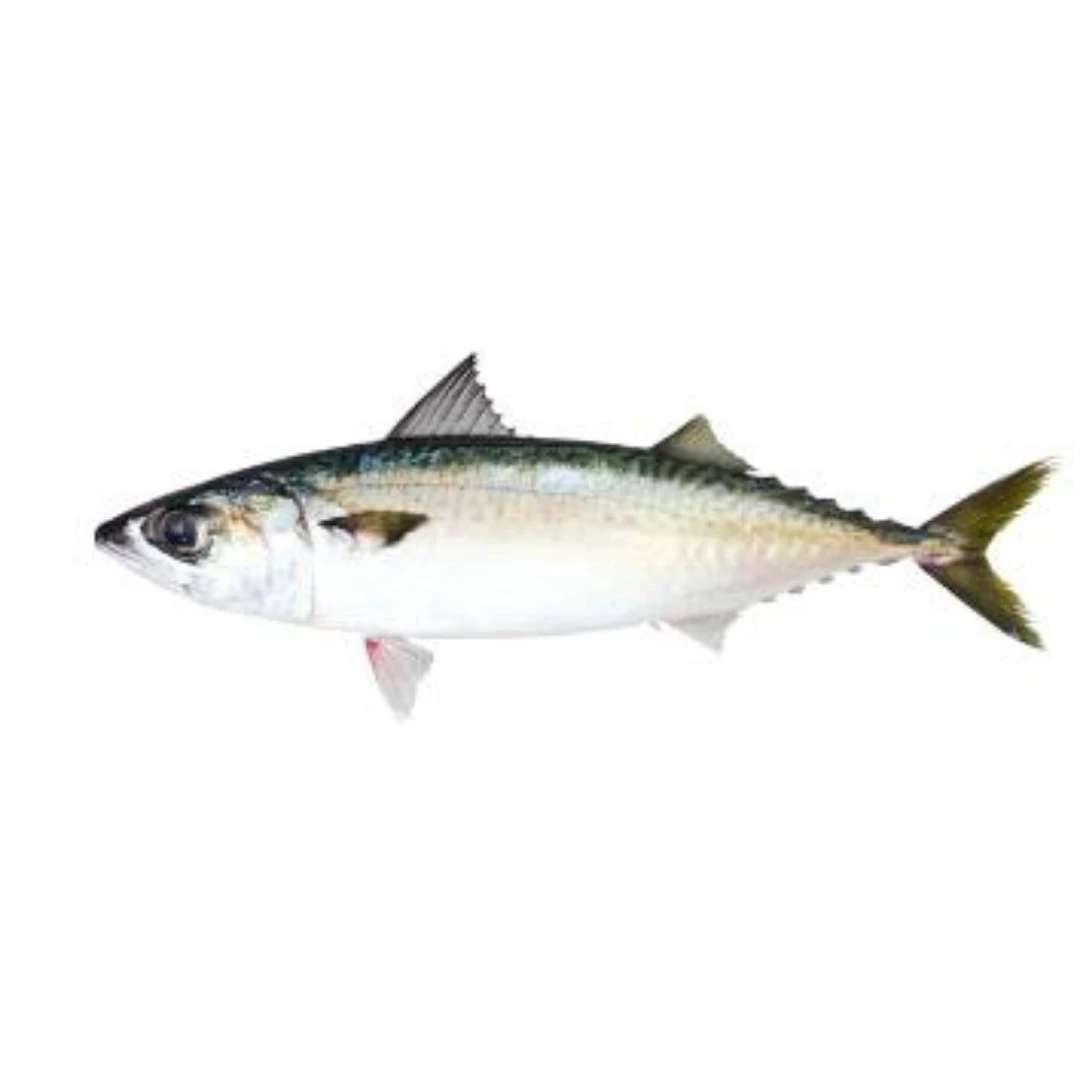MASABA - FRESH WILD MACKEREL - Scomber japonicus Houttuyn
Blue-Backed Fish (光物) (Mackerel, Sardines, Horse Mackerel, etc.)
Medium (中) (0.45-0.68 KG / 1-1.5 LB)

Description
まさば MASABA - FRESH WILD MACKEREL - Scomber japonicus Houttuyn
Location/Origin
Oita
Size/Weight
0.49 KG per piece (Actual Weight May Vary)
Texture/Flavor Profile
The Masaba mackerel offers a firm yet tender texture with a rich, oily, and savory taste. It has a strong, full-bodied flavor, often described as umami, making it a prized fish for sushi and grilling.
Availability/Seasonality
This mackerel is widely available throughout the year, with peak freshness from late autumn to early spring. Sourced from the coastal waters of Japan, it’s most abundant during colder months when the fish’s fat content is at its highest, offering a more flavorful experience.
About
Masaba (Scomber japonicus) is a wild-caught chub mackerel, renowned for its rich flavor and high oil content. This species is native to the Indo-Pacific region and is abundant in the waters surrounding Japan. Its firm flesh and unique marbling make it a popular choice for sashimi, sushi, and other Japanese delicacies. Unlike other mackerels, Masaba features distinctive wavy lines along its belly and narrow zigzag stripes on its back, contributing to its visual appeal. It’s a versatile fish that has been a staple in Japanese cuisine for centuries and is even recognized for its health benefits, thanks to its omega-3 fatty acids.
Preparation
Masaba is often enjoyed as sashimi or sushi, but its rich flavor makes it ideal for various cooking methods. Grill, broil, or pan-fry to bring out its natural umami flavor, or marinate in vinegar and salt for a classic Japanese dish, Shime Saba. Its oily nature also makes it perfect for smoking or pickling, adding a depth of flavor to any meal.
Nutritional Value
Rich in omega-3 fatty acids, protein, and essential vitamins such as B12 and D, Masaba offers numerous health benefits. It supports heart health, cognitive function, and provides a great source of high-quality protein, making it a nutritious choice for any meal.
Selection and Storage
When selecting Masaba, look for fish with bright, clear eyes, shiny skin, and a fresh, ocean-like aroma. Store it on ice or in the refrigerator to maintain its freshness, and consume within 1-2 days for the best taste. If you're not using it immediately, consider freezing to preserve its quality.
Summary
The Masaba mackerel is a versatile and flavorful fish with a rich, oily texture that elevates any dish. From sashimi to grilling, it delivers an umami-packed experience that chefs and seafood enthusiasts will appreciate. Its nutritional benefits, coupled with its distinct flavor, make Masaba an excellent choice for both traditional Japanese dishes and modern culinary creations.
Location/Origin
Oita
Size/Weight
0.49 KG per piece (Actual Weight May Vary)
Texture/Flavor Profile
The Masaba mackerel offers a firm yet tender texture with a rich, oily, and savory taste. It has a strong, full-bodied flavor, often described as umami, making it a prized fish for sushi and grilling.
Availability/Seasonality
This mackerel is widely available throughout the year, with peak freshness from late autumn to early spring. Sourced from the coastal waters of Japan, it’s most abundant during colder months when the fish’s fat content is at its highest, offering a more flavorful experience.
About
Masaba (Scomber japonicus) is a wild-caught chub mackerel, renowned for its rich flavor and high oil content. This species is native to the Indo-Pacific region and is abundant in the waters surrounding Japan. Its firm flesh and unique marbling make it a popular choice for sashimi, sushi, and other Japanese delicacies. Unlike other mackerels, Masaba features distinctive wavy lines along its belly and narrow zigzag stripes on its back, contributing to its visual appeal. It’s a versatile fish that has been a staple in Japanese cuisine for centuries and is even recognized for its health benefits, thanks to its omega-3 fatty acids.
Preparation
Masaba is often enjoyed as sashimi or sushi, but its rich flavor makes it ideal for various cooking methods. Grill, broil, or pan-fry to bring out its natural umami flavor, or marinate in vinegar and salt for a classic Japanese dish, Shime Saba. Its oily nature also makes it perfect for smoking or pickling, adding a depth of flavor to any meal.
Nutritional Value
Rich in omega-3 fatty acids, protein, and essential vitamins such as B12 and D, Masaba offers numerous health benefits. It supports heart health, cognitive function, and provides a great source of high-quality protein, making it a nutritious choice for any meal.
Selection and Storage
When selecting Masaba, look for fish with bright, clear eyes, shiny skin, and a fresh, ocean-like aroma. Store it on ice or in the refrigerator to maintain its freshness, and consume within 1-2 days for the best taste. If you're not using it immediately, consider freezing to preserve its quality.
Summary
The Masaba mackerel is a versatile and flavorful fish with a rich, oily texture that elevates any dish. From sashimi to grilling, it delivers an umami-packed experience that chefs and seafood enthusiasts will appreciate. Its nutritional benefits, coupled with its distinct flavor, make Masaba an excellent choice for both traditional Japanese dishes and modern culinary creations.


